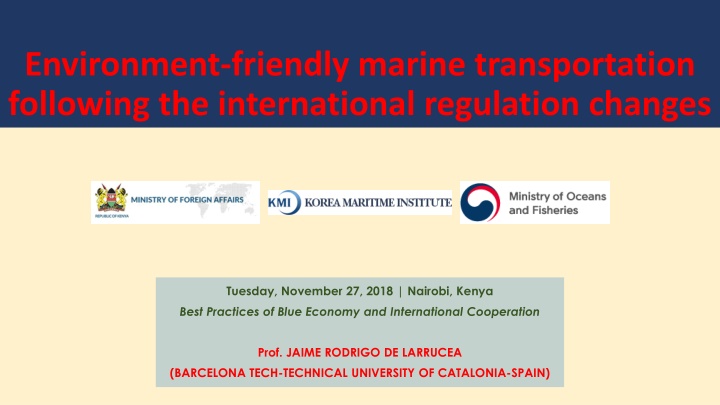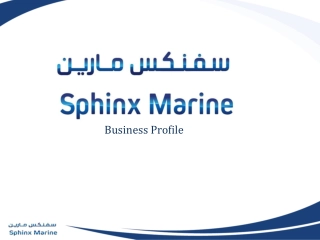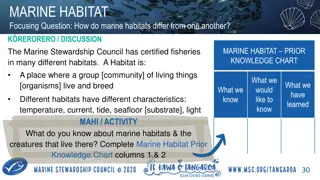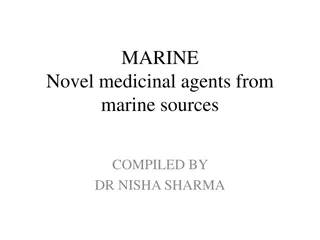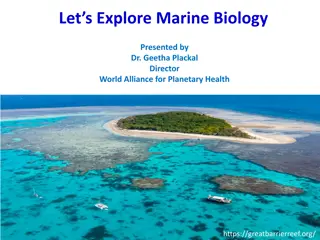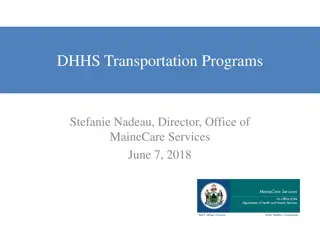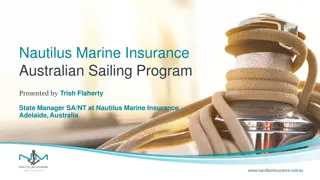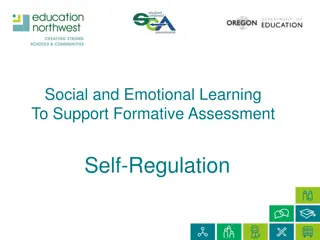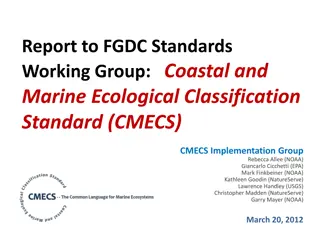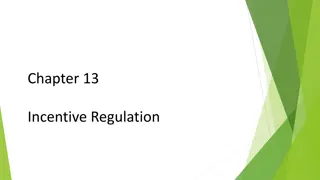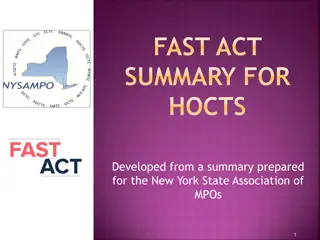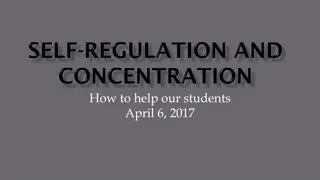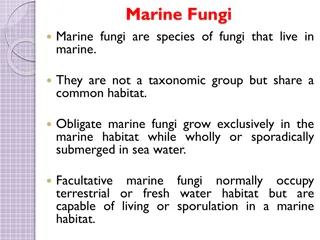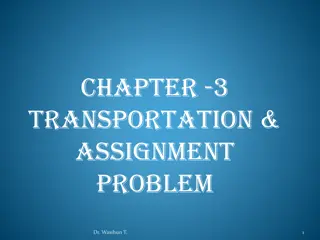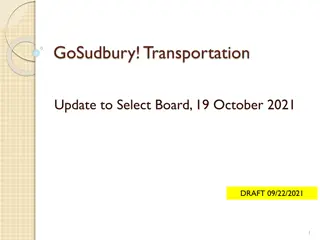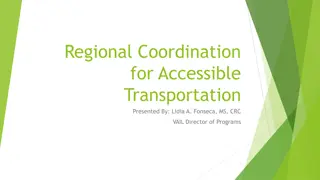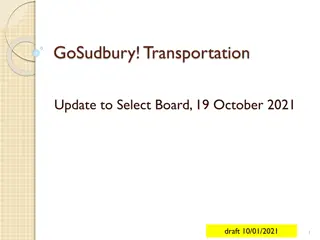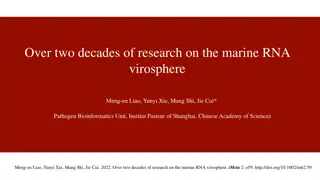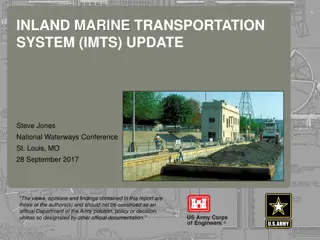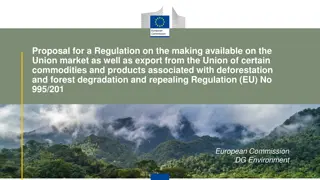Environment-Friendly Marine Transportation Regulation Changes
Offering an overview of international regulations on eco-friendly marine transportation, focusing on key changes introduced by the IMO. Topics include MARPOL Annex VI, ballast water control, anti-fouling systems, ship recycling, and wreck removal.
Download Presentation

Please find below an Image/Link to download the presentation.
The content on the website is provided AS IS for your information and personal use only. It may not be sold, licensed, or shared on other websites without obtaining consent from the author.If you encounter any issues during the download, it is possible that the publisher has removed the file from their server.
You are allowed to download the files provided on this website for personal or commercial use, subject to the condition that they are used lawfully. All files are the property of their respective owners.
The content on the website is provided AS IS for your information and personal use only. It may not be sold, licensed, or shared on other websites without obtaining consent from the author.
E N D
Presentation Transcript
Environment-friendly marine transportation following the international regulation changes Tuesday, November 27, 2018 | Nairobi, Kenya Best Practices of Blue Economy and International Cooperation Prof. JAIME RODRIGO DE LARRUCEA (BARCELONA TECH-TECHNICAL UNIVERSITY OF CATALONIA-SPAIN)
Introduction Aim of this presentation: To offer a general overview of the most relevant international regulations on Environment-friendly Marine Transportation Main changes introduced by the IMO: Generals: MARPOL Annex VI on the Prevention of Air Pollution from Ships (1997) International Convention for the Control and Management of Ships' Ballast Water and Sediments (BWM) (2004) Specifics: International Convention on the Control of Harmful Anti-fouling Systems on Ships (2001) The Hong Kong International Convention for the Safe and Environmentally Sound Recycling of Ships (2009) Nairobi International Convention on the Removal of Wrecks (2007)
MARPOL Annex VI on the Prevention of Air Pollution from Ships (1997 Revised on 2008) 1/4 Original entry into force: 19 May 2005 Revision entry into force: 1 July 2010 Objective: To reduce the main air pollutants contained in ships exhaust gas How? Setting maximum limits on emissions that are progressively diminished over time (Tiers) Introducing Emission Control Areas (ECAs) to reduce emissions of air pollutants further in designated sea areas. Main air pollutants covered by the regulation: Sulphur oxides (SOx) Nitrous oxides (NOx) Ozone depleting substances (ODS)
MARPOL Annex VI on the Prevention of Air Pollution from Ships (1997 Revised on 2008) 2/4 Tier System: Tier I: Engines installed on a ship constructed on or after 1 January 1990 but prior to 1 January 2000 Tier II: Engines installed on a ship constructed on or after 1 January 2011 Tier III: Engines installed on a ship constructed on or after 1 January 2016 Not applicable to a marine diesel engine installed on a ship constructed prior to 1 January 2021 of Less than 500 gross tonnage and/or Less than of 24 m or over in length if solely for recreational purposes Engine constructors have to comply with these limits to obtain the corresponding certification from the Administration Expected outcome of these measures: A beneficial impact on the atmospheric environment and on human health, particularly for those people living in port cities and coastal communities
MARPOL Annex VI on the Prevention of Air Pollution from Ships (1997 Revised on 2008) 3/4 Liquefied Natural Gas (LNG) as an alternative to traditional fossil fuels: On 2020 the sulphur concentration limit of the gases released into the atmosphere by ships will be 0,5 % Currently only 50 ships are operating with LNG It is expected that due to the sulphur concentration restrictions by 2020 this number will have increased to 300 Nowadays LNG offers the better alternative to traditional fuels in terms of efficiency and safety The change of ships' engines to incorporate this fuel will result in a considerable environmental improvement
MARPOL Annex VI on the Prevention of Air Pollution from Ships (1997 Revised on 2008) 4/4 Energy Efficiency Design Index (EEDI) What is it? An instrument provided for new ships that aims to reduce pollution through the development of energy efficient equipment and engines How? With a increasingly demanding tiers system Calculation formula:
International Convention for the Control and Management of Ships' Ballast Water and Sediments (BWM) (204) 1/2 Entry into force: 17 September 2008 Shipping as a major pathway for introducing species to new environments Objective: To prevent the spread of harmful aquatic organisms from one region to another How? By establishing standards and procedures for the management and control of ships' ballast water and sediments Shipowner obligations: To implement a Ballast Water and Sediments Management Plan To carry a Ballast Water Record Book to carry out ballast water management procedures to a given standard
International Convention for the Control and Management of Ships' Ballast Water and Sediments (BWM) (2004) 2/2 State Parties obligations: To provide adequate reception facilities for the reception of sediments in their ports and terminals To promote and facilitate scientific and technical research on ballast water management; and monitor the effects of ballast water management in waters under their jurisdiction To carry out surveys and inspections on ships To provide support for those Parties which request technical assistance
International Convention on the Control of Harmful Anti-fouling Systems on Ships (2001) Entry into force: 17 September 2008 What is Anti-fouling? Evolution of the materials used From lime and arsenic to chemical compounds derived from tin Consequences of their use for the environment Obligation for states parties to prohibit the use of environmentally harmful materials Open List System for Prohibited Materials Establishment of a technical group in charge of evaluating and controlling the different existing or new materials Possibility of adding new compounds and materials proven to be harmful to the environment
The Hong Kong International Convention for the Safe and Environmentally Sound Recycling of Ships (2009) 1/2 Not yet in force Slow ratification process Currently only 6 States Parties: Belgium, Congo, Denmark, France, Norway and Panama Object: Highly polluting shipbuilding materials (asbestos, heavy metals, hydrocarbons, ozone-depleting substances, etc.) Environmental conditions of recycling facilities Content: Comprehensive regulation of the life of the ship, from its design and construction to its operation and recycling
The Hong Kong International Convention for the Safe and Environmentally Sound Recycling of Ships (2009) 2/2 Design and construction: Preparation of ships to facilitate safe and environmentally sound recycling The Convention includes a list of materials that may not be used in construction Ships must incorporate an Inventory of Potentially Hazardous Materials used in their construction Initial survey to verify the Inventory Operation: Regular surveys throughout the life of the ship o Vessel inventory and condition verification Recycling: The Ship Recycling Plan: o Provided by ship recycling yards o Specific to each vessel o Taking into account the inventory of potentially hazardous materials Obligations of States Parties: o Authorisation of recycling facilities o Control of recycling activities
Nairobi International Convention on the Removal of Wrecks (2007) Entry into force: 14 April 2015 First international normative framework in the field Scope of application: EEZ Obligation to inform the Maritime Authorities of the incident Liability exemption for location of remains Strict liability of shipowners towards the State Costs of locating, marking and removing ships and wreck Financial security or compulsory Insurance to cover the risk (+300GT) Limitation of Liability
THANK YOU VERY MUCH FOR YOUR ATTENTION
